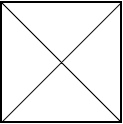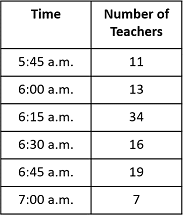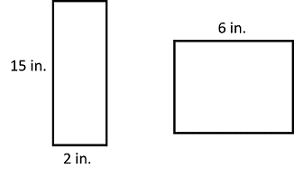MAP Math Test 2nd Grade: Free Practice, Scores & Tips
Welcome to your complete practice guide for the MAP Math test for 2nd grade.
Below you’ll find everything needed to help your child prepare and excel in the MAP math section, including free practice questions, prep tips, valuable information, and more.
So if you’d like to maximize your child’s MAP math score, you’ll love this guide.
Let’s dive in!
What Is on the 2nd Grade MAP Math Test?
The 2nd Grade MAP Math test assesses your child’s mathematical abilities through a variety of question types. The test is untimed and in total, there are 40-43 questions. These questions include word problems, number exercises, and visual displays, providing an evaluation of your child’s understanding.
Check our detailed guide to get more valuable information about the MAP 2nd Grade test.
The method of answering varies from question to question, adding a dynamic element to the assessment. Your child may be asked to select one or multiple items on the screen or provide short written answers.
The MAP test covers several key areas of mathematical knowledge, including:
- Algebraic Thinking:
- Representing numbers in various ways.
- Solving problems that involve logical thinking and mathematical reasoning.
- Analyzing patterns to enhance pattern recognition skills.
Example:
648 – X = 369 – 252
X = ?
- Numbers and Operations:
- Counting skills, assessing your child’s ability to work with numbers.
- Understanding sets and their properties.
- Grasping the concept of place value and the base ten system.
- Introducing the basics of fractions.
Example:
If there are 36 apples in a basket, and they need to be distributed equally among 6 friends, how many apples will each friend get?
- Geometry and Measurement:
- Identifying shapes and understanding their properties.
- Measuring the length of sides, fostering spatial awareness.
- Utilizing rulers and protractors to enhance measurement skills.
Example:
How much longer is the longest ribbon than the shortest one?
- Data:
- Reading and interpreting data presented in charts.
- Analyzing information to draw conclusions and make informed decisions.
Example:
Look at the chart showing the number of books read by each student. Which student read the most books?
Nurturing Your Child’s Understanding
As a parent, you play a crucial role in fostering your child’s understanding of mathematical concepts. Here are some practical tips to support your child’s growth in math and prepare them for success in the 2nd Grade MAP Math test:
1. Provide a Variety of Learning Resources:
Supplement classroom learning with diverse resources. Books, educational apps, and online practice tests can offer different perspectives and reinforce what your child learns at school. Ensure a balanced mix of resources to cater to various learning styles.
2. Engage in Everyday Math:
Encourage your child to notice and use math in everyday situations. Counting objects, measuring ingredients while cooking, or identifying shapes in the environment are simple yet effective ways to make math a part of daily life.
3. Make Learning Fun:
Introduce math games and activities that make learning enjoyable. Board games, puzzles, and online math games can turn math practice into a playful and engaging experience. This not only reinforces concepts but also creates a positive attitude towards math.
4. Use Real-world Examples:
Relate math to real-world scenarios. For instance, during a trip to the grocery store, involve your child in counting items, estimating costs, or comparing quantities. These practical applications help children understand the relevance of math in their daily lives.
5. Encourage Questions:
Create an environment where your child feels comfortable asking questions about math concepts. Discussing their thought process and reasoning behind answers promotes a deeper understanding of mathematical principles.
6. Acknowledge Mistakes as Learning Opportunities:
Emphasize that making mistakes is a natural part of the learning process. Encourage your child to see errors as opportunities to understand concepts better. This mindset fosters resilience and a positive attitude towards challenges.
7. Establish a Routine:
Create a consistent routine for math practice. Whether it’s a designated time for homework, math games, or discussions, a routine helps in building a structured approach to learning math.
8. Celebrate Achievements:
Acknowledge your child’s progress and achievements in math. Celebrate small milestones to boost their confidence and motivation. Positive reinforcement is key to nurturing a love for learning.
9. Communicate with Teachers:
Stay in touch with your child’s teacher to understand their strengths and areas for improvement. Collaborate with educators to tailor your support at home based on your child’s specific needs.
Take a Free MAP Math 2nd Grade Practice Test
The sample test below is divided into easy, moderate, and difficult questions so that you can identify where your child struggles more and estimate their level.
Easy Questions
Sample Question #1
What is the perimeter of the following shape?

A. 8
B. 10
C. 12
D. 32
Correct Answer & Explanation:
The correct answer is (B).
The shape in question is called a Pentagon, because it has five sides. The perimeter of a shape is simply the sum of its sides’ lengths.
Each side is labeled with the number two. In this case, the shape is called a regular pentagon (all its sides are equal).
The perimeter is: 2 + 2 + 2 + 2 + 2 = 10
Sample Question #2
19 – X = 4
X = ?
A. 5
B. 13
C. 14
D. 15
Correct Answer & Explanation:
The correct answer is (D).
To find what number goes in the box, you need to understand how subtraction works. If subtracting a number from 19 gives as a result four, then subtracting four from 19 must give that same number.
Simply put, if: 19 – X = 4
Then, 19 – 4 = X
Therefore, you need to subtract 4 from 19.
19 – 4 = 15, and that is answer (D).
Moderate Questions
Sample Question #1
On a table, there was a five-dollar bill, three dimes, two nickels and six pennies. How much money was on the table?
A. $5.11
B. $5.41
C. $5.46
D. $5.51
Correct Answer & Explanation:
The correct answer is (C).
When adding up money, it is best to separate the whole numbers from the cents. Remember that a dime is worth ten cents, a nickel is worth five cents, and a penny is worth one cent.
First, you have a five-dollar bill, which gives $5.
Next, you have three dimes (that is 30 cents, because 10 x 3 = 30), two nickels (that is 10 cents because 5 x 2 = 10), and finally, six pennies (that is 6 cents because 6 x 1 = 6). Add it up and you get 30 + 10 + 6 = 46 cents.
In total, you have five dollars and 46 cents, which is $5.46.
Sample Question #2
How many right angles are in the following shape?

A. 2
B. 4
C. 6
D. 8
Correct Answer & Explanation:
The correct answer is (D).
The shape in the question is a square and its diagonals. Since it is a square, you automatically know of four right angles (one for each corner of the square).
In addition to this, a property of squares is that their diagonals are perpendicular. Therefore, you have another four right angles, making a total of 4 + 4 = 8.
Difficult Questions
Sample Question #1
One hundred teachers were asked what time they woke up for school on a regular morning. The table below shows the results:

A. 11
B. 13
C. 24
D. 58
E. 76
Correct Answer & Explanation:
The correct answer is (C).
If sunrise was at 6:13 a.m., then the only times in the table earlier than that are 5:45 a.m. and 6:00 a.m. There were 11 teachers awake at 5:45 a.m. and 13 more teachers awake at 6:00 a.m. Altogether, there were 11 + 13 = 24 teachers awake before sunrise.
Sample Question #2
The rectangles below have the same area.

Correct Answer & Explanation:
The correct answer is (B). The perimeter is the sum of the sides’ lengths. However, you do not have the measurement for the length of the rectangle on the right (you only have the width). The area of a rectangle is its length multiplied by its width.
Since both rectangles have the same area, you can calculate the area of the rectangle to the left (of which you have the measurements), and use it to find the length of the rectangle to the right. The area of the left rectangle is simply 15 x 2 = 30 inches squared.
Therefore, 30 = 6 x (the length of the rectangle on the right) From this, you find out that the length is five inches, and now you can calculate the perimeter knowing that the opposite sides of a rectangle have the same length. The perimeter is 6 + 5 + 6 + 5 = 22 inches
Understand the 2nd Grade MAP Math Scores
How MAP Scores are Computed
The calculation of MAP (Measure of Academic Progress) scores involves a sophisticated algorithm designed to adapt to your child’s responses. These scores are presented as RIT (Rasch Unit) scores, using a measurement scale that tracks academic progress over time. Percentiles are employed to gauge your child’s performance in comparison to their peers nationally.
Analyzing RIT Scores
High Achievement: RIT scores surpassing the 90th percentile indicate exceptional performance, showcasing a strong understanding of grade-level material.
Median Achievement: RIT scores falling within the 40th to 60th percentile suggest an average performance, indicating that your child meets the expected standards for their grade.
Lower Achievement: RIT scores below the 30th percentile may highlight areas where your child could benefit from additional support. This provides an opportunity to identify and address specific learning needs.
See the table below for specific RIT scores and percentiles for 2nd Grade Math (based on this official PDF):
| Percentile | Mathematics (RIT Score) | |
|---|---|---|
| Higher Achievement | 95 84 69 | 196 188 181 |
| Median | 50 | 175 |
| Lower Achievement | 31 16 5 | 169 162 154 |
Gaining an understanding of MAP scores enables you to celebrate your child’s achievements, identify areas for improvement, and actively participate in their academic journey. Bear in mind that each child learns at an individualized pace, and these scores function as a valuable tool to tailor support and encouragement according to their specific needs.
